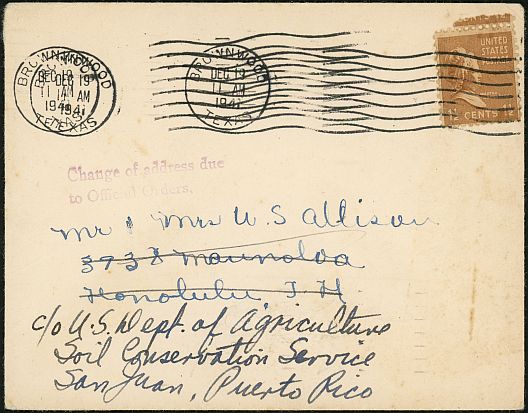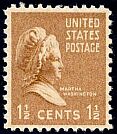
The One-and-one-half-cent Prexie
Greeting card use
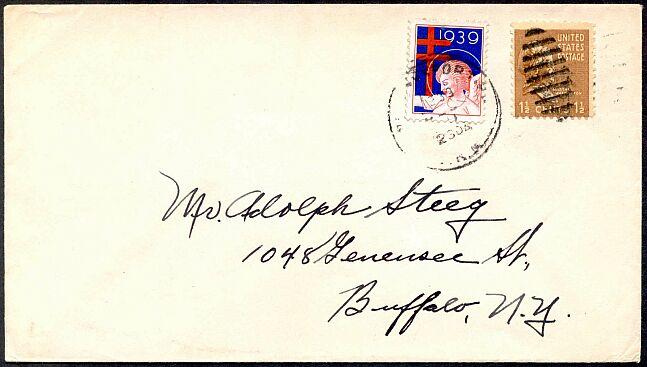
The third class rate for printed circulars and miscellaneous matter was extended to unsealed greeting cards as well. It was one-and-one-half cents per two ounces from April 15, 1925 until January 1, 1949.
This card bears a tied Christmas seal from 1939, but the mailing date is unreadable. Such seals are normally allowed on the front of the envelope only in December.
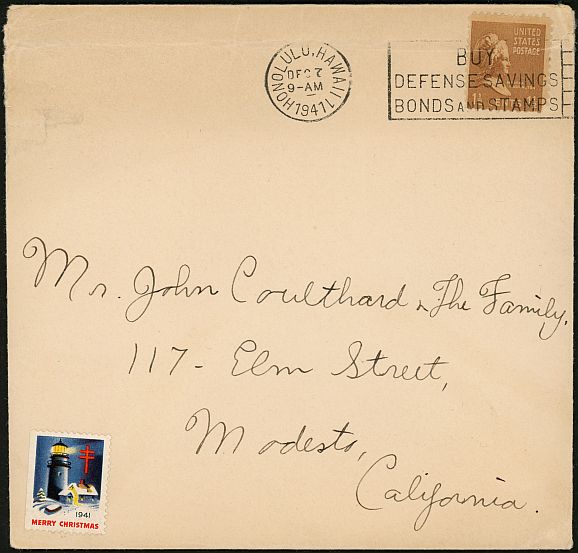
Territories and possessions were also allowed to send unsealed cards at the third class rate. This card was sent from Honolulu to the mainland. It is postmarked December 7, 1941, the morning of the bombing of Pearl Harbor, before the post office was shut down.
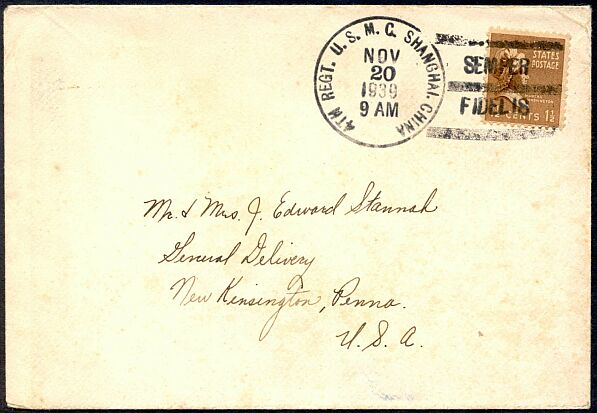
Military personnel on active duty were allowed to send third class mail at domestic rates. This card was sent from the 4th Regiment of the U.S. Marine Corps on duty in Shanghai in 1939.
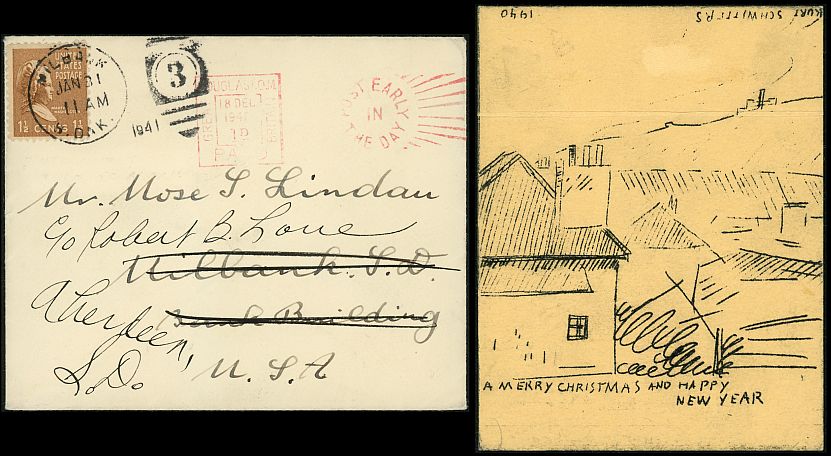
Foreign cards coming into the United States that were forwarded upon arrival required application of third class U.S. postage.
This is a card sent from a British internment camp for foreign nationals on the Isle of Man to Mandan, South Dakota in 1941. The recipient had moved to Aberdeen, so third class postage was added for forwarding. Inside was a rather bleak card designed by the international artist Kurt Schwitters, who was confined to the internment camp at the time.
